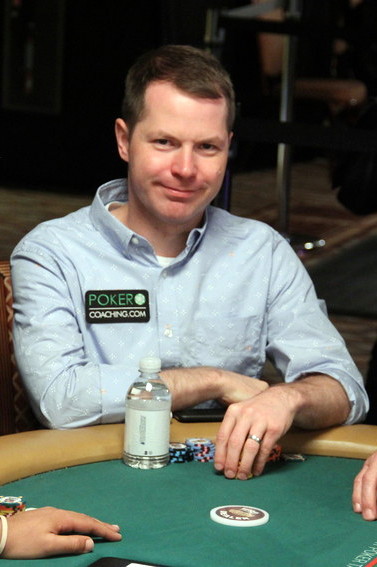






Extracting Full Valueby Jonathan Little | Published: Jul 13, 2022 |
|
|
 If you want to increase your poker skills and learn to crush the games, check out Jonathan Little’s elite training site at PokerCoaching.com/CardPlayer.
If you want to increase your poker skills and learn to crush the games, check out Jonathan Little’s elite training site at PokerCoaching.com/CardPlayer.
I was recently told about a hand from a $330 buy-in live poker tournament that illustrates a common mistake that many amateur players make on a regular basis.
Early in the tournament with blinds at 100-200 with 15,000 effective stacks, a tight player limped from first position, the player in second position called, and then our Hero called from middle position with 10 9
9 .
.
While this call is reasonable enough, folding is often going to be the best play unless your opponents will play particularly poorly after the flop. If the stacks were much deeper, perhaps 150 big blinds instead of 75 big blinds, limping then would become acceptable due to the increased implied odds.
When you splash around with marginal hands, you want to have the potential to win a huge pot when you are fortunate enough to flop a premium hand. Especially as stacks get shallower, you should fold these marginal hands, even when it only costs one big blind to see the flop.
The small blind and the big blind both elected to see the flop. The flop came J 8
8 7
7 , giving Hero the nut straight. That is lucky!
, giving Hero the nut straight. That is lucky!
The blinds checked to the initial limper, who bet 500 into the 1,000 pot. The second position player folded. Hero decided to just call.
At this point, Hero must raise if he wants to have any chance to win a significant pot. While slow playing the nuts that is not too vulnerable to being outdrawn is always an option, when it is somewhat likely that you are against a decently strong hand, raising is almost always the right play.
Notice that the flop bettor could easily have a set, two pair, overpair or top pair, meaning there are numerous hands Hero gets called by that are drawing thin or close to dead.
The blinds folded, and the turn was the 3 . The opponent checked and Hero bet 500 into the 2,000 pot.
. The opponent checked and Hero bet 500 into the 2,000 pot.
As on the flop, if Hero wants any chance to win a large pot, he needs to start building the pot. Betting 500 into 2,000 is not going to get the job done. Hero should make a sizable bet of 1,500 or even 2,000 into the 2,000 pot, allowing him to then reasonably make a sizable river bet.
Hero probably thought his opponent’s turn check indicated weakness, but it is important to realize that your reads will often be incorrect. Betting tiny to try to get called by absolute garbage on a somewhat coordinated board is futile. Simply bet large and try to get maximum value from your opponent’s decently strong made hands and combo draws.
The opponent called the 500 bet. The river was the 2 . The opponent checked and Hero bet 2,500 into the 3,000 pot.
. The opponent checked and Hero bet 2,500 into the 3,000 pot.
I am fine with this bet size, but once the opponent check-calls a tiny turn bet, his range is likely quite marginal, meaning Hero should consider betting a bit smaller, perhaps 1,500 into the 3,000 pot.
The opponent thought for a while before folding A-J (top pair, top kicker) face-up.
While I think the opponent’s fold is much too tight, it is important to realize that if Hero raised the flop, he would have almost certainly won a gigantic pot, probably getting a full double up. As played, he won almost nothing.
If the opponent happened to make an overly tight fold with top pair against a flop raise, Hero should adjust by bluffing with a wide range of marginal draws, allowing him to win all the pots when this opponent fails to flop the effective nuts. In general, though, when you flop a premium hand, you want to get money in the pot. And you don’t get money in the pot by playing passively or betting small. ♠
 Jonathan Little is a two-time WPT champion with more than $7 million in live tournament earnings, best-selling author of 15 educational poker books, and 2019 GPI Poker Personality of the Year. If you want to increase your poker skills and learn to crush the games, check out his training site at PokerCoaching.com/cardplayer.
Jonathan Little is a two-time WPT champion with more than $7 million in live tournament earnings, best-selling author of 15 educational poker books, and 2019 GPI Poker Personality of the Year. If you want to increase your poker skills and learn to crush the games, check out his training site at PokerCoaching.com/cardplayer.
Features
Tournaments
Strategy
Commentary & Analysis